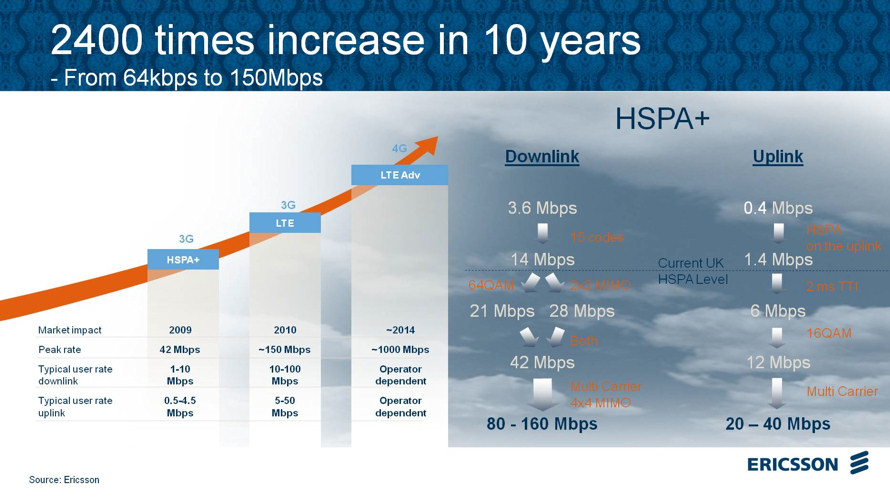2. We’ve heard claims that future ‘Advanced LTE’ will be able to deliver speeds of up to 1Gbps (1000Mbps), is that actually realistic and when could we expect to see such a colossal improvement?
ERICSSON: LTE Advanced is what in standards today they refer to as “real 4G”. The requirement to deliver 1Gbps speed is a fundamental one and it is of course a target. It represents a significant shift in thinking and is achieved through higher and more sophisticated modulation, multiple paths / antennas to increase throughput and of course the main factor is the use of wider channels (which could be as wide as 100MHz – which is 5 times the LTE maximum channel and 20 times the HSPA/HSPA+ channel). Governments and regulators are working hard to make harmonised spectrum available, for scale and throughput.

3. What other advantages (e.g. latency, capacity management, smaller spectrum requirements etc?) does LTE offer that HSPA does not?
ERICSSON: LTE mainly offers the following advantages:
- Significant reduction in latency, for better real time and interactive services.
- Excellent scalability and very flexible allocation of channels of different sizes to fit different needs
- Better performance on the cell edge
- A much simpler, all IP, network architecture to deliver broadband services with a significant reduction in overall operating expenses
- The all IP approach means that the four basic services can be delivered over the same network:
- Fixed voice
- Mobile voice
- Fixed data
- Mobile data
4. Currently some UK operators have deployed HSPA implementations with top download speeds of up to 7.2Mbps and the others claim around 3.6Mbps, yet in reality most consumers would consider themselves to be lucky if they got a stable connection of around 2Mbps.
Ericsson has already claimed that first generation LTE will deliver “ten times” the current experience of a 3.6Mbps service, which equates to about 36Mbps. This sounds impressive but how much of that 36Mbps is actually realistic, especially with UK mobile operators being strapped for cash and already risking future capacity problems?
ERICSSON: The very nature of radio and the environment makes it difficult to predict precise performance in a mobile environment. We’ve used the “ten times” phrase to help people relate to their perception of how actual performance feels today.
As for operator investment in the network to support higher speeds, we are consistently delivering network equipment with ever increasing capacity and we should also remember that total capex spend for an operator is often below 10% of sales. Meanwhile a high speed, low latency network is a simple end user proposition for which operators will be able to charge a premium when it is introduced.
